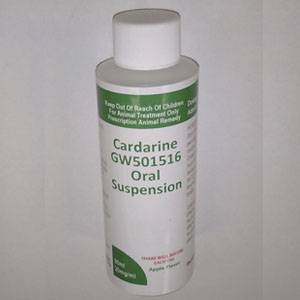Enrotopp
Enrotopp is a veterinary product that contains enrofloxacin, a powerful broad-spectrum fluoroquinolone antibiotic. It is primarily used for treating bacterial infections in livestock and companion animals. Enrotopp is used to manage infections in animals caused by susceptible Gram-positive and Gram-negative bacteria. enrotopp veterinario
Key Information about Enrotopp:
Active Ingredient:
Enrofloxacin: A fluoroquinolone antibiotic that works by inhibiting the bacterial enzymes DNA gyrase and topoisomerase IV, which are essential for bacterial DNA replication, transcription, and repair. This leads to bacterial cell death.
Uses/Indications:
Enrotopp is indicated for the treatment of bacterial infections in a variety of animal species, including:
Cattle: For respiratory diseases caused by susceptible bacteria (e.g., Mannheimia haemolytica, Pasteurella multocida, Histophilus somni).
Pigs: For respiratory infections and septicemia caused by Actinobacillus pleuropneumoniae, Pasteurella multocida, etc.
Poultry: To control bacterial infections like colibacillosis (caused by Escherichia coli) and mycoplasmosis.
Companion animals (dogs and cats): Used to treat various bacterial infections of the respiratory tract, gastrointestinal tract, urinary tract, and skin.
Dosage Forms:
Enrotopp is available in different forms for different applications, such as:
Injectable solution: Typically administered for severe infections or in livestock for faster absorption.
Oral tablets: Used for easier administration in smaller companion animals like dogs and cats.
Oral solution: Used for mass treatment in poultry or groups of livestock.
4. Dosage and Administration:
Cattle: The injectable form is administered at a dosage of 2.5 to 5 mg/kg of body weight, depending on the type and severity of infection, usually once a day for 3–5 days.
Pigs: Administer 2.5 to 5 mg/kg of body weight by injection or via drinking water, depending on the severity of the infection, for 3–5 days.
Poultry: Dosage is administered through drinking water, typically at a concentration of 10 mg/liter for 3–5 days.
Dogs and cats: The oral form can be administered at a dosage of 5 to 10 mg/kg of body weight daily for 5–10 days, depending on the infection. enrotopp veterinario
Always consult a veterinarian for specific dosing instructions based on the animal’s weight, the type of infection, and the species being treated.
Benefits:
Broad-spectrum activity: Effective against a wide range of bacterial pathogens.
Fast action: Rapid absorption and distribution, leading to quick therapeutic concentrations.
Convenience: Available in various forms, making it adaptable for different species and clinical scenarios.
Efficacy: Enrofloxacin is known for its ability to combat both Gram-positive and Gram-negative bacteria, including resistant strains.
Potential Side Effects:
Gastrointestinal upset: Vomiting, diarrhea, or anorexia may occur, particularly in dogs and cats.
Cartilage damage: In young, growing animals (especially puppies and kittens), enrofloxacin can cause damage to joint cartilage, leading to lameness.
Neurological effects: Rarely, animals may experience seizures or other neurological symptoms, particularly if they have pre-existing conditions.
Photosensitivity: Prolonged exposure to sunlight may cause increased sensitivity in some animals after treatment.
Injection site reactions: Local swelling or discomfort may occur at the injection site in livestock.
Precautions:
Young animals: Avoid use in puppies under 12 months (18 months for large breeds) due to cartilage damage risk.
Pregnant or lactating animals: Safety in pregnant or lactating animals is not well established. Use with caution or avoid.
Seizure-prone animals: Use cautiously in animals with a history of seizures or neurological disorders.
Concurrent use: Avoid using Enrotopp with drugs that can interfere with its absorption (e.g., antacids containing magnesium or aluminum).
Withdrawal Periods:
Enrofloxacin-containing products like Enrotopp require withdrawal periods in food-producing animals before slaughter or milk production:
Cattle (meat): Typically 14–28 days depending on the country’s regulations.
Pigs (meat): Usually 14 days.
Milk: Not recommended for use in lactating dairy cows, as enrofloxacin residues can persist in milk for extended periods.
Resistance:
Improper use of antibiotics like enrofloxacin can lead to the development of antibiotic-resistant bacteria. It’s essential to follow the prescribed dosage and duration of treatment and use antibiotics only under veterinary supervision.
Contraindications:
Fluoroquinolone allergies: Do not use in animals with known hypersensitivity to enrofloxacin or other fluoroquinolones.
Juvenile animals: Avoid in young, growing animals to prevent cartilage damage.
Concomitant use with theophylline: Fluoroquinolones can increase the concentration of theophylline, leading to toxicity.
Conclusion:
Enrotopp (containing enrofloxacin) is a highly effective antibiotic for treating a wide range of bacterial infections in livestock and companion animals. Its fast-acting properties and broad-spectrum efficacy make it a valuable tool in veterinary medicine. However, like all antibiotics, Enrotopp should be used responsibly under the guidance of a veterinarian to avoid side effects and prevent the development of antibiotic-resistant bacteria. enrotopp veterinario





Reviews
There are no reviews yet.